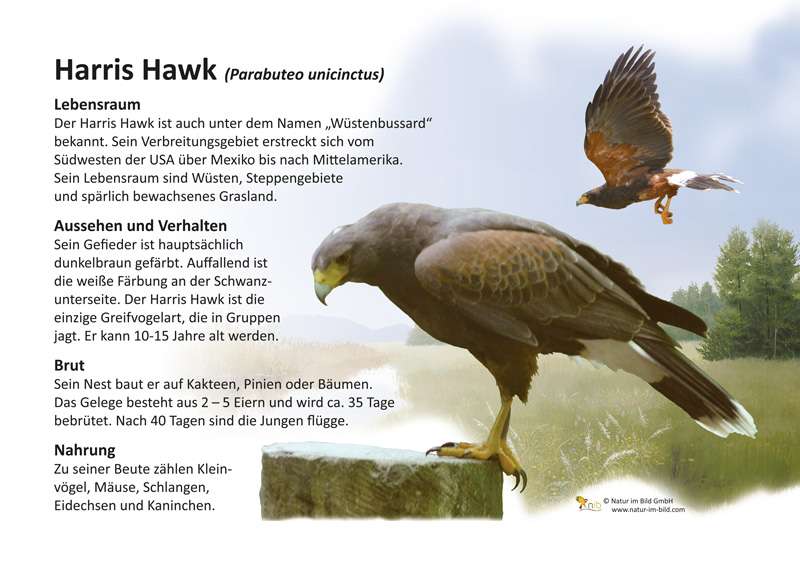Exploring the Harris Hawk: Unique Characteristics and Habitat

Introduction to the Harris Hawk
The Harris Hawk, scientifically known as Parabuteo unicinctus, stands out in the avian world due to its striking appearances and remarkable hunting strategies. Nestled primarily in the southwestern United States and parts of South America, this bird of prey is not only significant for its role in the ecosystem but also fascinating to bird watchers and falconers alike. With a growing interest in raptors and their conservation, the Harris Hawk’s relevance has surged in discussions about biodiversity, habitat preservation, and environmental education.
Physical Characteristics
The Harris Hawk is easily identifiable by its dark brown plumage, white markings on its tail, and chestnut-colored patches on its wing feathers. Adult birds typically weigh between 600 to 1,200 grams, with a wingspan that can reach up to 120 centimeters. These dimensions make them one of the larger species among hawks, giving them an edge in hunting and foraging.
Habitat and Distribution
This adaptable bird prefers semi-arid environments, savannahs, and desert regions. They are commonly found in open landscapes that provide suitable nesting sites such as tall cacti or trees. They are unique among hawks as they exhibit social behaviour, often hunting in groups, which enhances their success rate when capturing prey like rabbits, rodents, and reptiles.
Conservation Status
Currently, the Harris Hawk is classified as a species of least concern by the International Union for Conservation of Nature (IUCN). However, habitat loss due to urbanisation and agriculture remains a significant concern. Conservation efforts are ongoing, aimed at preserving their natural habitats and ensuring a stable food supply. Local wildlife conservation groups are working to raise awareness of the importance of maintaining biodiversity, especially regarding predatory birds like the Harris Hawk.
Hunting and Falconry
The Harris Hawk is highly sought after in the field of falconry for its trainability and cooperative hunting style. Unlike other hawk species that prefer to hunt solo, the Harris Hawk’s social inclination allows it to work with falconers in dynamic hunting scenarios, making it a favourite among those in the sport.
Conclusion
The Harris Hawk remains a remarkable species that plays a critical role in its ecosystem. As discussions about conservation and ecological balance become increasingly prominent, understanding and appreciating the Harris Hawk’s unique traits and behaviours can foster a greater commitment to protect these incredible birds of prey. In the future, as habitat preservation strategies continue to evolve, the Harris Hawk may shine as a symbol of successful conservation efforts, inspiring both the public and policymakers to ensure its survival.







